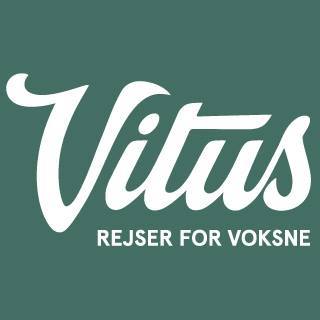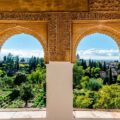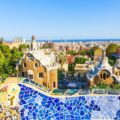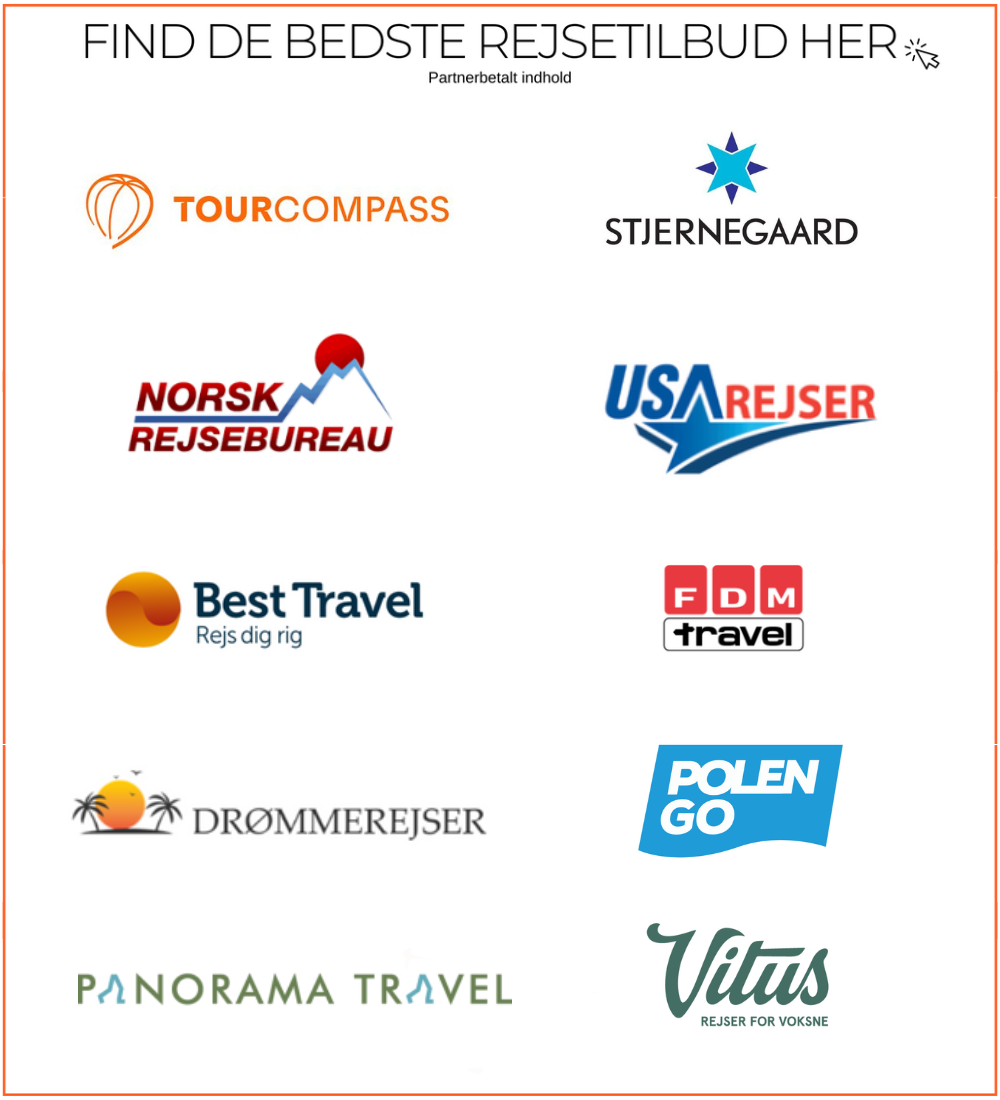Buenos Aires: Insider Guide to the Pumping Heart of South America is written by Jacob Gowland Jørgensen.
Listen to the article here:

Buenos Aires - a fascinating city
After visiting Argentina 10 times over the past 14 years, I'm now getting to grips with the fascinating and rather confusing collection of neighborhoods and people called Buenos Aires - BA.
And although the city is colossal with its over 14 million. residents, you may not even be able to find it on your GPS if you search the city. It is just as often called the Capital Federal (CF), or its official, full name: Ciudad Autónoma de Buenos Aires - CABA.
Here is therefore an insider guide about the city and some practical info about the almost perfect travel country that Buenos Aires is the gateway to. It's all based on knowledge from their own travels, from other travelers and from a strip of friends in Buenos Aires who know the city like the back of their hand.

The best way to travel in Buenos Aires - and in Argentina
Buenos Aires is a huge city with many people gathered in a small space. At the same time is Argentina the world's eighth-largest country. It is also a country with large income differences, and with a distinct southern European touch on service and quality, where all kinds of practical help can be obtained cheaply.
It means that:
- It takes a really long time to drive around the country on your own. Use the many domestic planes to see something. Prioritize what you want to see and possibly combine with the long-distance buses, which are pure luxury
- The weather is always good somewhere in the country, and muddy and cold somewhere!
- In Buenos Aires, one should to that extent refrain from driving oneself due to the traffic culture and poorly signposted, one-way roads. It is quick to get there by taxi and metro
- It can be cheaper to rent a car with a driver (a discount) than to rent a car yourself or take a bus
- It can be better - and cheaper - to get, for example, a local travel agency to arrange a trip than to do it yourself. They have many local customers and therefore good deals with hotels. A trip to the Iquazu National Park from Buenos Aires e.g.
In other words: Doing it all yourself is not always the best and cheapest in this country. Enjoy that fact and get more out of your vacation by leaving some of the work to the local guides, drivers, chefs, etc. Should you get sick you can also get the doctor to come to the hotel!

The best places to stay in Buenos Aires
What most often cheats at Buenos Aires is that one thinks there is a center in Argentina. It is there too, in fact at least a 5-6 pieces. However, they are far from equally interesting from a traveler's point of view.

Microcentro
At the original center you have the House, the Obelisk and the long pedestrian street of Florida. I personally would not stay overnight here. It's a bit of a mix of a tourist trap and an office area, which is therefore quite depopulated this evening. On the edge of the area there are some huge roads with traffic around the clock, i.a. the world's widest boulevard; Avenida 9 de Julio.
In Argentina, they have a different relationship to noise, so a hostel may well be right next to what we would call a highway. The closest one can compare the area with is probably the original center of an American metropolis, where there is probably life during the day, but rarely in the evening.
Be aware that locals call the area Microcentro, but when you look at a map above Neighborhoods it officially consists of parts of the neighborhoods of San Nicolas, Montserrat and Retiro with the main railway station.
If you really want to stay here in Microcentro, look for the area right by the Teatro Colon. However, avoid Florida and its side streets and not least the Boulevard 9 de Julio itself.
San Telmo, La Boca and Constitucion
Another classic center is San Telmo, located just south of Microcentro. This is where the tango is said to originate. Here you will also find some beautiful squares, cobbled streets and bar streets.
San Telmo is like Microcentro, a must visit. The location down to the port district of La Boca unfortunately makes it a slightly more raw neighborhood than the romantic pictures that are most often shown from there.
However, it is definitely an interesting and vibrant neighborhood that attracts quite a few younger travelers, and it is known for its large market at the weekend. San Telmo and La Boca are in many ways Buenos Aires' answer to Vesterbro and Nordvest in Copenhagen, just in poorer versions.
In general, Buenos Aires in Argentina is a very safe city for travelers. The only places in the central part of Buenos Aires that are strongly discouraged from staying overnight due to crime (including by Lonely Planet), are the historic district of Constitucion next to San Telmo, and then the eastern parts of La Boca.
There are other areas that are more interesting. All are within easy reach of the attractions of Microcentro. In addition, they have a lot of charm and opportunities in themselves: Recoleta, Palermo (with the neighborhoods Barrio Norte, Palermo Viejo / Soho, Palermo Hollywood, Palermo Botanico) and Puerto Madero.
Recoleta and Barrio Norte
Recoleta is classic BA in the good way.
Here you will find the famous cemetery, and not least a lot of fantastic restaurants, beautiful buildings, design centers and air and light.
Barrio Norte, adjacent to Recoleta, is a little more modest, but still really cozy and safe. Here, in turn, you have a lot of usable shops on Santa Fe, better prices and few tourists.
These neighborhoods, barrios, in Recoleta and Barrio Norte are most reminiscent of the inner and outer Østerbro in Copenhagen. This also applies to green areas and the location in the city, just with significantly more life due to the many people.
Both neighborhoods are obvious choices when choosing a place to stay in Buenos Aires.
Did you know: Here is an expert from USA Rejser Nicolai Bach Hjorth's top 7 overlooked destinations in the USA!
7: Apostle Island, unique islands off Wisconsin
6: Finger Lakes, scenic lakes of New York
Get numbers 1-5 immediately by signing up for the newsletter, and look in the welcome email:

Palermo Viejo and Palermo Hollywood
Palermo Viejo is BA, as BA once looked, and my own favorite neighborhood. The part around the central square, Plaza Serrano / Plaza Cortázar, is also called Palermo Soho, which is very apt. This is where you will find the funniest, strangest and cheapest stores.
It is also here where many locals go out to eat or walk in the city. It is at once big city and village, trendy and earth-shattering, rushing and peaceful. Here is also the restaurant street Cabrera, which is Buenos Aires at its best and most original.
It bet neighboring Palermo Hollywood is a little more messy and cheeky, but is definitely an option as well. This is where you will find a lot of outlets. Here, for example, is the outlet version of the leather shop "Prüne" near the intersection Gurruchaga / Loyola, which should make every woman go shop-crazy. Yves Saint Laurent for men is also located here, in Cordoba.
Besides Palermo Viejo, it is here in Palermo Hollywood where you will find the most trendy hotels, such as the designer hotel Vitrum, and a wide range of bars and walk-in-town places.


Palermo Botanico & Palermo Chico
Finally, there is the Palermo Botanico, located next to the Botanical Gardens and the Zoo. It is a charming, cozy and manageable neighborhood for the creative with money.
It is within walking distance of Palermo Viejo and just off a metro station and the Evita Museum. They have the best lunch restaurant in their garden, around the corner from the entrance.
It is an obvious place to rent an apartment if you are a family on a trip. With the latest initiatives with European-inspired microbrewery bars and outdoor life, it is now also a place to go out in the city with your friends for a cozy evening. Aim for the junction between Lafinur & Cerviño, which is the green artery in the area. It's one of my absolute favorite streets in Buenos Aires.
In Copenhagen, Palermo Viejo and Palermo Hollywood would probably correspond to the areas around Studiestræde, Sankt Hans Torv and Christianshavn (though without the water). Palermo Botanico is probably most reminiscent of Indre Frederiksberg near Vesterbro. All however in livelier versions…
Next to these two neighborhoods is the very fashionable neighborhood of Palermo Chico. With its large parks and embassies, it is the city's answer to Hellerup.


Puerto Madero
A relatively new option is Puerto Madero close to Microcentro (Italy) The district is an old harbor area with department stores that have been restored and extended - not unlike Langelinje in Copenhagen in style and location. It is easily located for the whole city and there are lots of good restaurants there. Conversely, there is also something depopulated in the evening.
When choosing where to stay in Argentina, it is also worth remembering that it is very cheap and easy to get around. There is an army of taxis (with working taximeters), which will rarely cost you over DKK 30 to drive in, and a metro with tickets for a few kroner. So rather find a place where you feel like being both day and night, and grab a taxi from time to time.
The range of accommodation options is huge, so there is free stroke. If you have to live in the city for more than just 3-4 days and are a few pieces, it pays to rent an apartment. They are available in all sizes and price ranges. It is also a simple way to see more of the life that the locals live.




Great places to eat in Buenos Aires, Argentina
The easy answer to the question of where to eat in Buenos Aires is: Everywhere!
It is definitely hard to find bad food. It is also no coincidence that BA is on Tripadvisor's list "Top-10 Food & wine destinations in the world", with a clear 1st place in South and Central America.
On the other hand, it is usually cheap and comes in large portions. So if the waiter says you are ordering too much food, he is guaranteed right.
Here are some stable tips on how to get even more out of the gastronomic paradise, so you can also try some of the local specialties.
.


Meat, meat and more meat
Find a grill restaurant, a grill, and confess yourself to life as a carnivore. Because it will be difficult to find a better selection of quality meat than here. Lomo (tenderloin), Chorizo steak (entrecote) and Rib Eye (rib-eye) fried to point (medium) are sure winners with potatoes (sweet potatoes) or squash (pumpkin) to.
You can also just order one roast, then you get a little of it all. If you want green, remember to order it. Meat is the king here.
If you want to try something new, give it a try chitterlings (viscera) or their various chorizos and morcillas (sausages). They are often excellent. And remember to eat chimichurri to - it's a cold spice dressing that usually comes with.
One can also be lucky to find lamb, lamb from Patagonia, and game from the Andes. Recommended steak palaces are Cabaña Las Lilas in Puero Madero (expensive), late lunch at Cabrera and Cabrera Norte in Palermo Viejo (between) and La Caballeriza in Palermo Hollywood and elsewhere in the city (cheap). In all three places you can also get other types of food, but there is no reason to choose.
Did you know: Here is an expert from USA Rejser Nicolai Bach Hjorth's top 7 overlooked destinations in the USA!
7: Apostle Island, unique islands off Wisconsin
6: Finger Lakes, scenic lakes of New York
Get numbers 1-5 immediately by signing up for the newsletter, and look in the welcome email:


Pasta and pizza
Italian cuisine is doing well in BA thanks to the many Italian immigrants. If you want to try something extraordinary, order Sorrentinos, which is a kind of giant ravioli that is available in many places. The large selection of pasta is often the rescue of vegetarians in BA.
There are also quite a few pizza places, and if you are into huge amounts of cheese you should try a "Pizza Classico", and otherwise stay away from it. In general, the level of pasta is clearly above that of pizza. Therefore, the recommendation from here is to stick to the pasta.


Empanadas
The locals eat large amounts of pies, which is dough with different kinds of snacks in it, which is then baked or fried - the oven-baked ones Baked are the best! Humito og spicy carne are two of the original species from Salta, where they originate and children love queso y jamón, cheese and ham.
Eat them, for example, at cheap and cozy La Paila in Palermo Viejo, or one of the other Salta places called Peñas, where there is often international law locro and live music.


Ice cream and dessert
In Argentina, they love very sweet things, but try one vigilant with Sweet Batata, made on fresh cheese and sweet potatoes. It lasts, and it's not too heavy or sweet.
In addition, there is probably the best ice cream in the world on almost every street corner. Try for example a caramel sweet fudge, if you want to try the most local. My own favorite is Passion fruit mousse Passion fruit mousse, preferably combined with chocolate. Yum!
The ice bars in Buenos Aires regularly appear on the top 10 lists of the world's best ice cream shops. I've got two new favorites, which are also at the top of Tripadvisor's list: Rapa Nui in Recoleta and Barrio Norte, and especially Heladeria Cadore, which is the only place in the world where I have returned to buy a new ice cream, 5 minutes after I had eaten the first one.
It was shamelessly amazing. Cadore is located at Microcentro and is absolutely world class despite the store's humble appearance, location and size. Cadore is old school gourmet without fine manners - just the best of the best without so much nonsense.
There is also the ice cream shop Jauja in Palermo Botanico, and the chains Freddo and Volta. They are located all over the city and also supply high quality ice cream. The only one of the chains that falls through is Persicco, which i.a. located at Recoleta - it is often thin and uninteresting. The prices are roughly the same in the different stores, so you might as well choose the best ones.


What to drink in Buenos Aires
It is easy to find a good wine. The selection of quality wines is really large, the prices are low and they usually do not mix the grape types. So if you are into strong wine, a Malbec is right in the eye, and a Merlot is a sure hit if you are into less powerful red wine. Try an Argentine white wine in the form of a chablis if you want to be pleasantly surprised.
It is difficult to find anything other than local wine, and especially Chilean wine is non-existent. But we do not drink real Swedish beer in Denmark either…
There is a big boom in the number of places with their own small brewery. Where before it was difficult to find anything other than the national beer Quilmes, there are now plenty of options. Try for example the fun little beer bar Bombs at Azcuenaga 1222 in Barrio Norte. Here you can also get your can filled with the brew of the week.
Incidentally, it is located a few steps from the above-mentioned ice cream shop Rapa Nui, so it is a pretty delicious combination. Should you still be hungry, then lie authentic and cheap Parilla Los Pinos and No. 1500.
Also try the green tea, maté, at a restaurant if you want to test the national drink. If you need something cooling and thirst-quenching, it is difficult to beat "Terma Patagonica" mixed with a little water. Look for the plastic bottles in a kiosk or in a supermarket.


Even more delicious eateries
In addition to those mentioned under the various neighborhoods, here are a number of restaurants, all of which are highly recommended:
- Aramburu: Gourmet in absolute top class at reasonable prices. It's probably the best restaurant I've tried outside of Europe and Japan! Requires reservation and if there is no space, they have an excellent bistro just opposite
- Tegui: Gourmet in Palermo Viejo - their tasting menu is definitely worth a visit
- El Cuartito, Recoleta: Very local with no-nonsense pizzas and empanadas of the best drawer
- Happening, Puerto Madero: Classic food and state-of-the-art design
- Lelè de Troya, Palermo Viejo: Classic food in modern versions
- Osaka, Palermo Hollywood: Peru meets Japan, semi-expensive and top quality
- Guimpi V, Palermo Botanico: Empanadas and local comfort food at its best, a local favorite
- Nemo, Palermo Botanico: Seafood restaurant in the center, of which there are not many. Also try the fish restaurants in Tigre and in the delta north of the city.
If you want an even more local experience, try a “Puertas Cerradas”. It is a "closed-door restaurant", which in New Danish is most often called "Private dining". Here you enter a private home where the family cooks and you talk to the other guests.
The level is often quite high, so it's more of an intimate gourmet experience rather than a 'Spaghetti-with-meat sauce' experience.
La Cocina Discreta and Casa Felix are well known but also quite large. Therefore, try to search for what is open when you are there, or ask at the hotel if there is a local option.


The most interesting thing to see and experience in Buenos Aires
There is plenty to experience in Buenos Aires, Argentina by following the tourist routes that the guidebooks show.
Besides the mentioned classics in Microcentro and Palermo Viejo, my favorite places in the city are the art museum Malba, Plaza Dorrego in San Telmo, Designcenter Recoleta (at the back of the cemetery), Alvear street and Tigre and the delta just north of the city.


La Boca: Museums and markets
One of the pictures you most often see from BA is the colored houses in La Boca. To me, it's the only real tourist trap in town. It can be exciting to see the big stadium, and the small street is very photo-friendly, but it is and will be a colorful flop. In addition, La Boca is an area where you have to take extra care of your things.
The best advice is to put on your hiking boots. Then you just see more, and for example you can go on free guided walks in the city. An alternative is sightseeing by bike. Or maybe it was something with a trip to the special church where the idol Maradona and football are worshiped? You can also take a walk in a religious theme park, Tierra Santa = The Holy Land.
In the distinctive corner you will also find a brand new beautiful museum about "Islas Malvinas", the Falkland Islands, with which the Argentines have a surprisingly sensitive relationship. Therefore, expect a reasonably propagandistic style. It is definitely worth a visit, also because it is located on an old military site. Just remember that this is not a topic you can discuss with the locals.
The most interesting market is located somewhat from the tourist districts, namely in Slaughterhouses - named after the butchers who lived there, and can easily be reached by taxi or bus.
Read more about Argentina and Buenos Aires here


Experience the history of Buenos Aires
If you want to see how rich a city Buenos Aires in Argentina was 100 years ago, you can enter the Palacio de las Aguas, also called the Palacio Obras. It is the former waterworks, built as a giant English palace with all that belongs to the decoration. It had to look impressive even if it was just a waterworks.
It is located on the Riobamba 750, within walking distance of Microcentro and the Teatro Colon.
Tomás Eloy Martínez has written several books that have been translated into Danish. In "Santa Evita", part of the action takes place in the water palace, while "The Tango Singer" takes place all over Buenos Aires. They can both be recommended.


Dance with into life
The most important thing in Buenos Aires, however, is to get out and feel the pulse of the city. Go to the tango show in San Telmo (El Viejo Almacen eg), even if you are not into tango. Go to the restaurant first at 22, when the locals come.
Find some live music and drinks, for example Million, and seek out the locals Porteños on the best spanglish you can now. They will overwhelm you with tips, zest for life and hospitality.
The locals will proudly tell you that the city never sleeps and there is always going on in eg San Telmo and Palermo Viejo in Argentina.
If you have children with you, the Zoo, which is located right in the middle of the city, will be over pretty quickly. However, there is a really nice and large zoo called Temaiken just outside the city, and there is a bus running directly to it from the center.
The kids will definitely also love a trip to Tigre with its amusement park and the opportunity for a nice and unique sailing trip in the delta. You can take the train from Central Station directly there.


Do you speak Spanish? Language courses in Buenos Aires
If you need to cultivate your Spanish, there are several very professional language schools in the city. Among other things. COINED can be recommended. This applies regardless of your current language level, and regardless of whether you have a short or long time in the city. It is also an easy way to learn more about the culture and meet other travelers you can experience the city with. I have tried it myself, and it made a big difference.
By the way, you can easily travel in Argentina without knowing a word of Spanish, because even though the locals are not always comfortable speaking English, many understand a lot, as they have quite a lot of English teaching in the schools.
Have a good trip to the pumping heart of South America. Good trip to Buenos Aires, Argentina.
Where to live in Buenos Aires?
- The original center - Microcentro
- Tango's hometown San Telmo
- The wealthy area Recoleta
- The Barrio Norte neighborhood
- Palermo Viejo / Soho - big city and village in one
- Palermo Hollywood with lots of shopping opportunities
- The creative district Palermo Botanico
- Puerto Madero - Buenos Aires' answer to Langelinje




















































Super nice guide to Buenos Aires!
I would definitely recommend that you learn a few small standard phrases in Spanish before going to Buenos Aires - and especially if you are going to travel further around Argentina, where English is not particularly widespread.
Agree - and Argentina is such a lovely travel country that half could be enough.